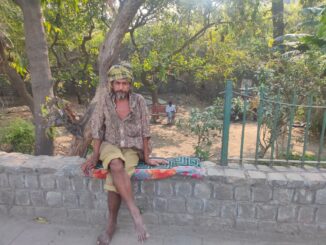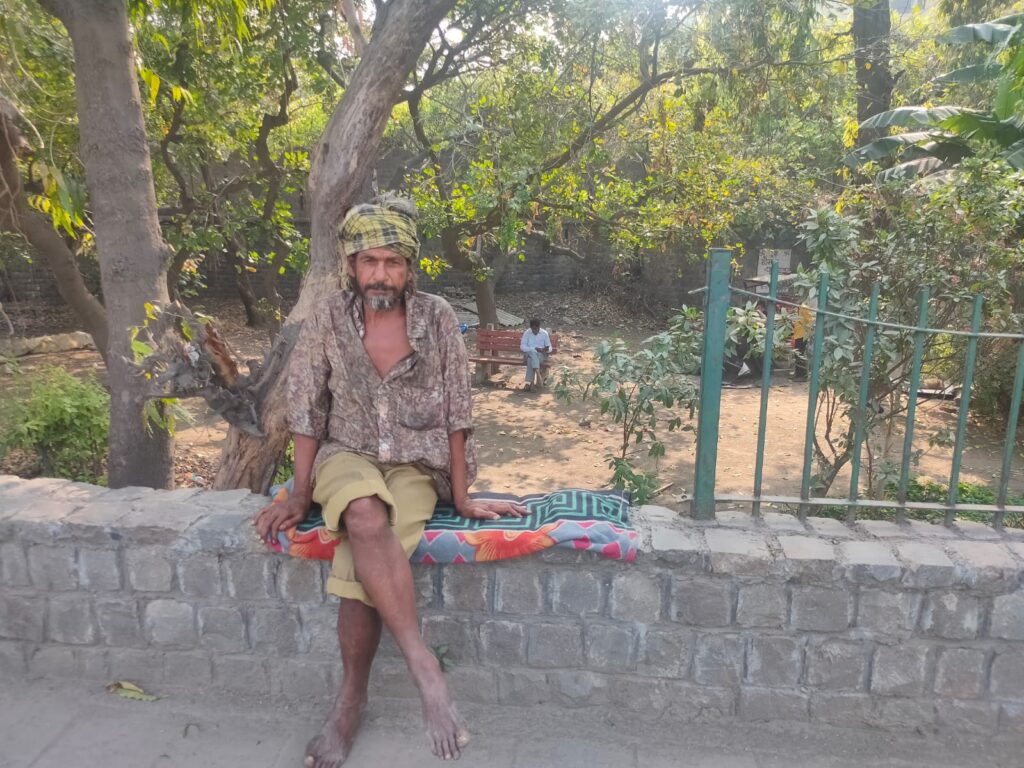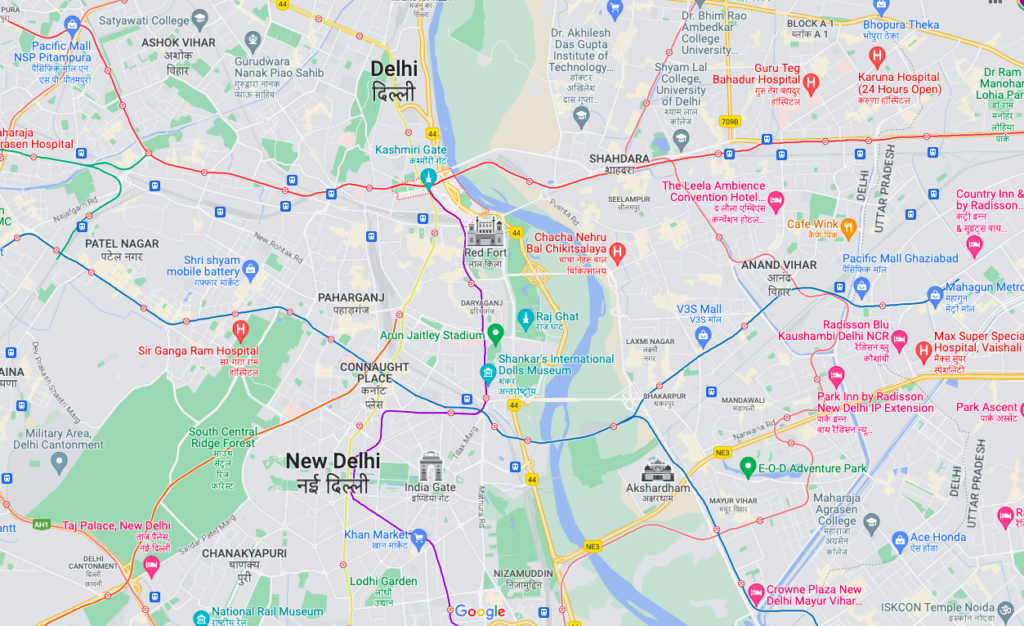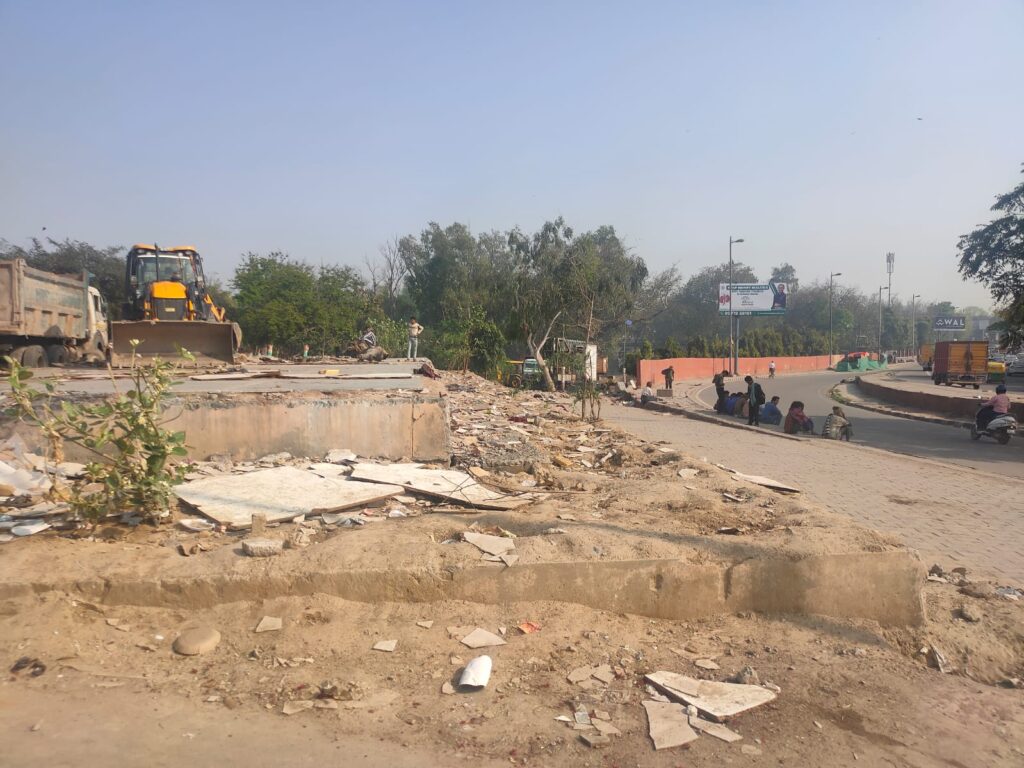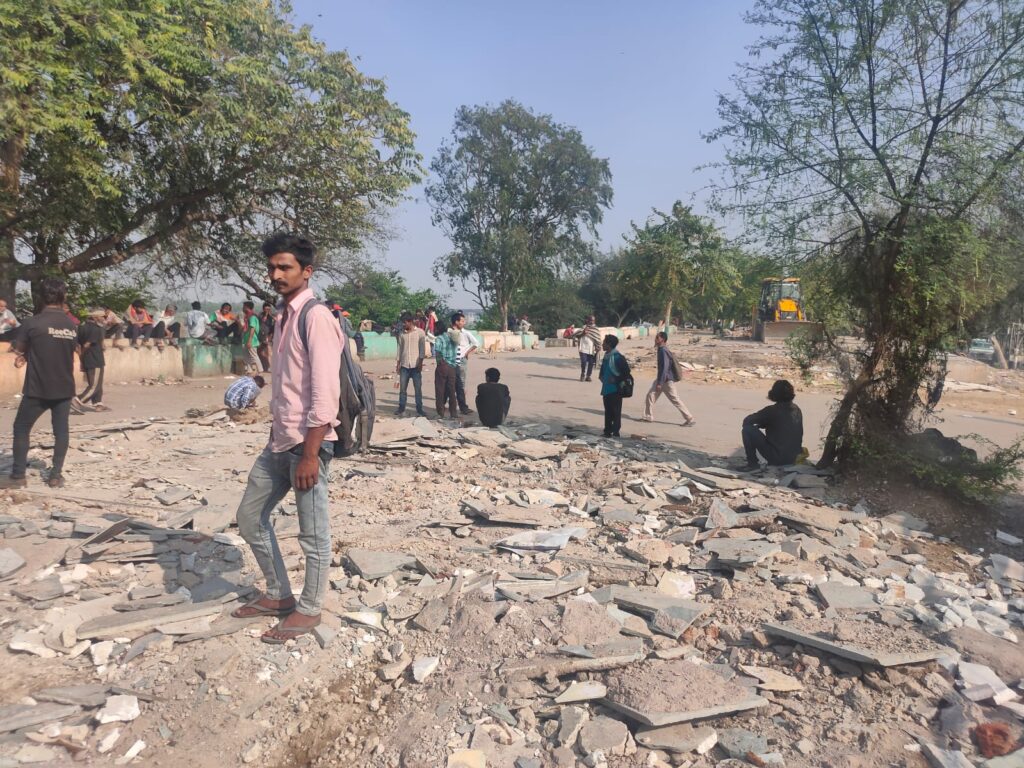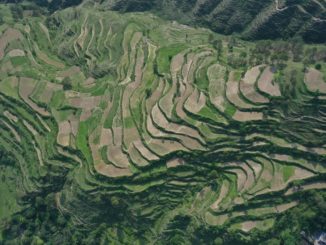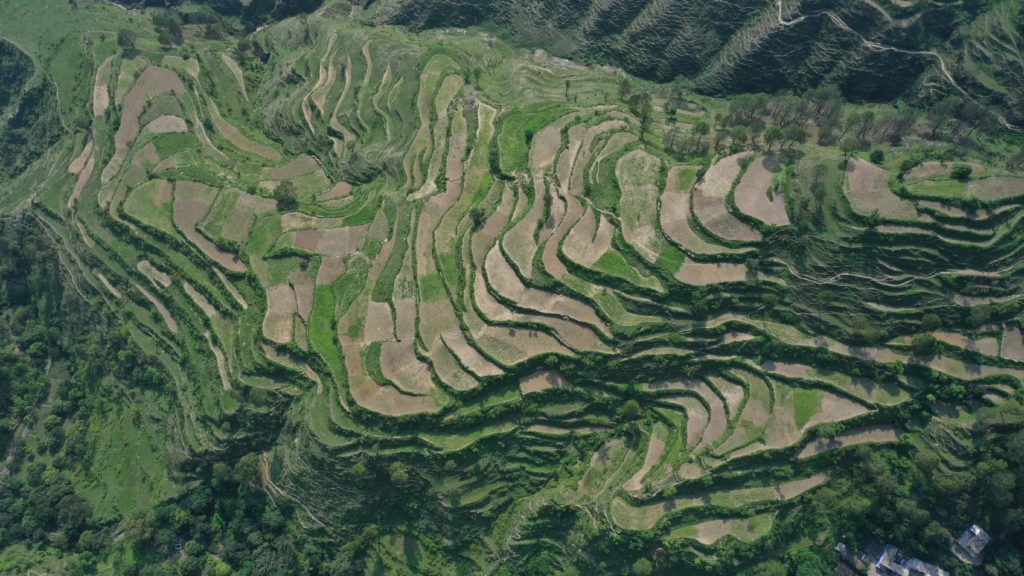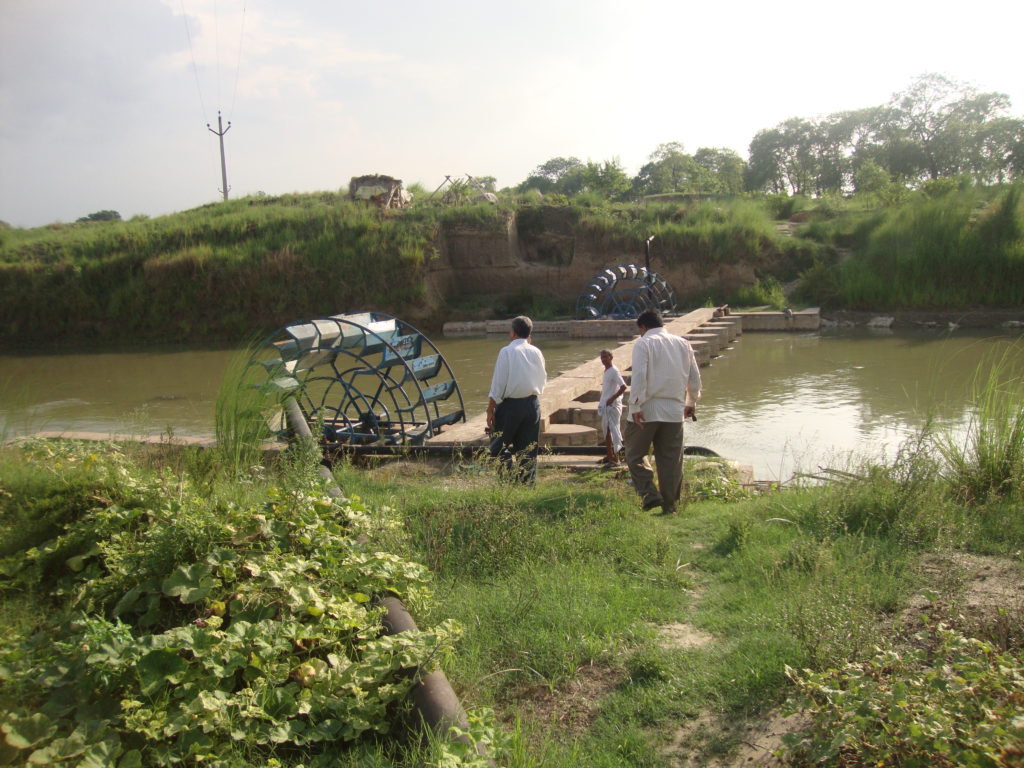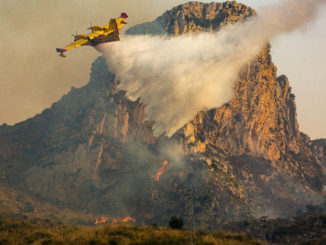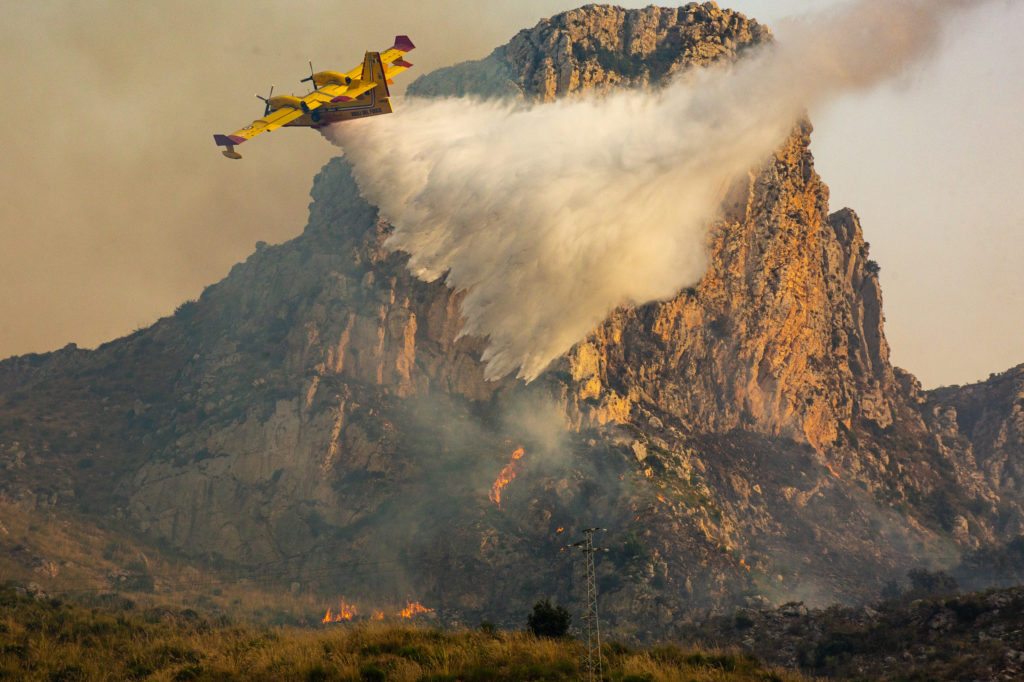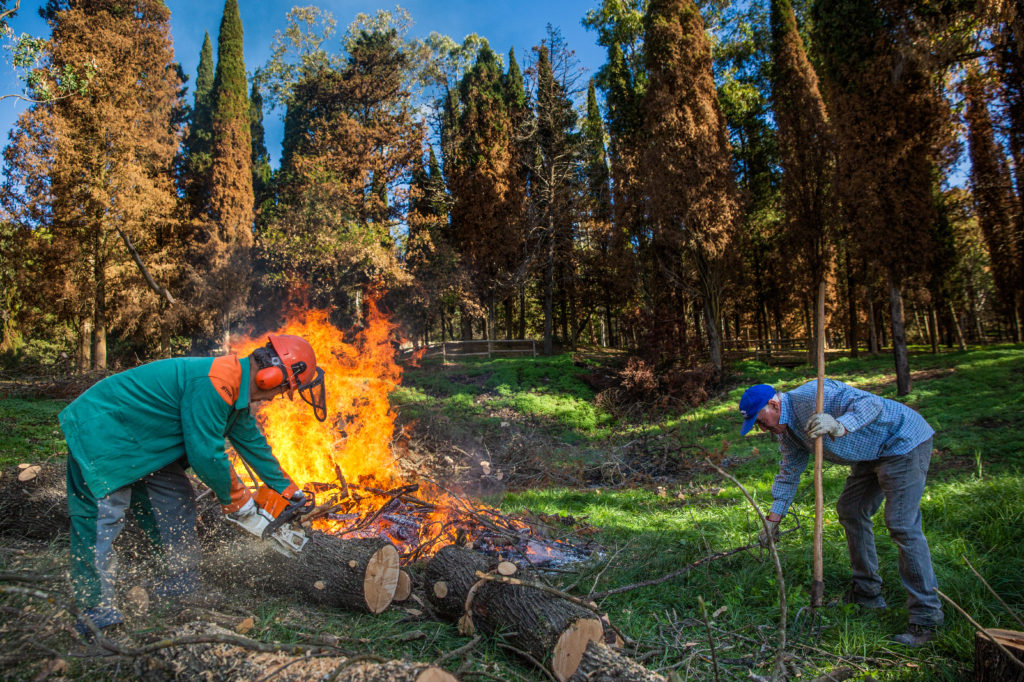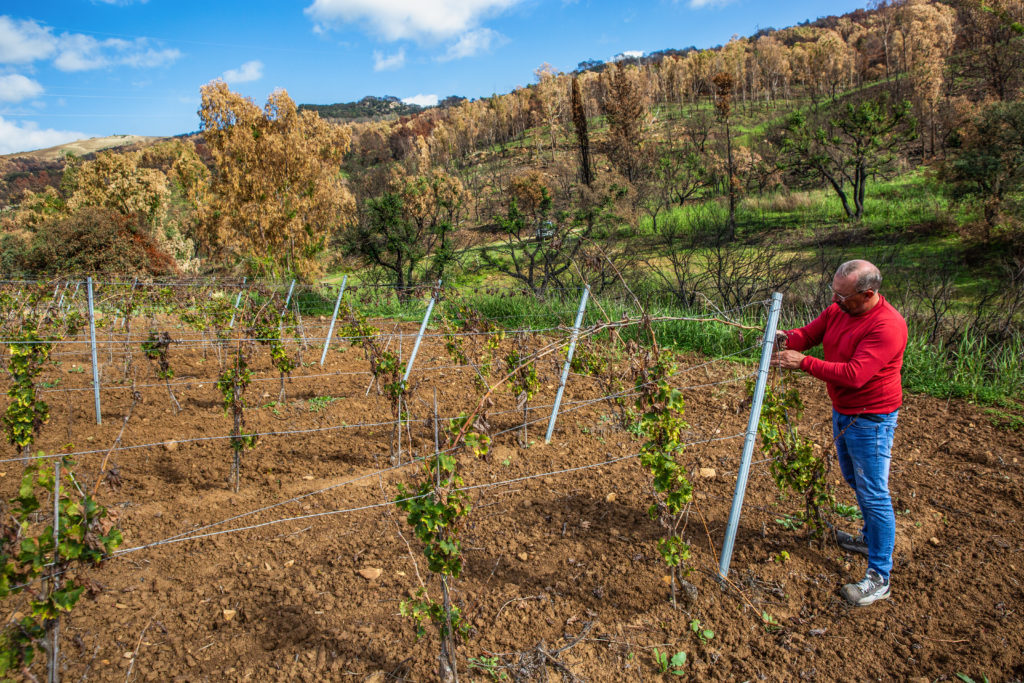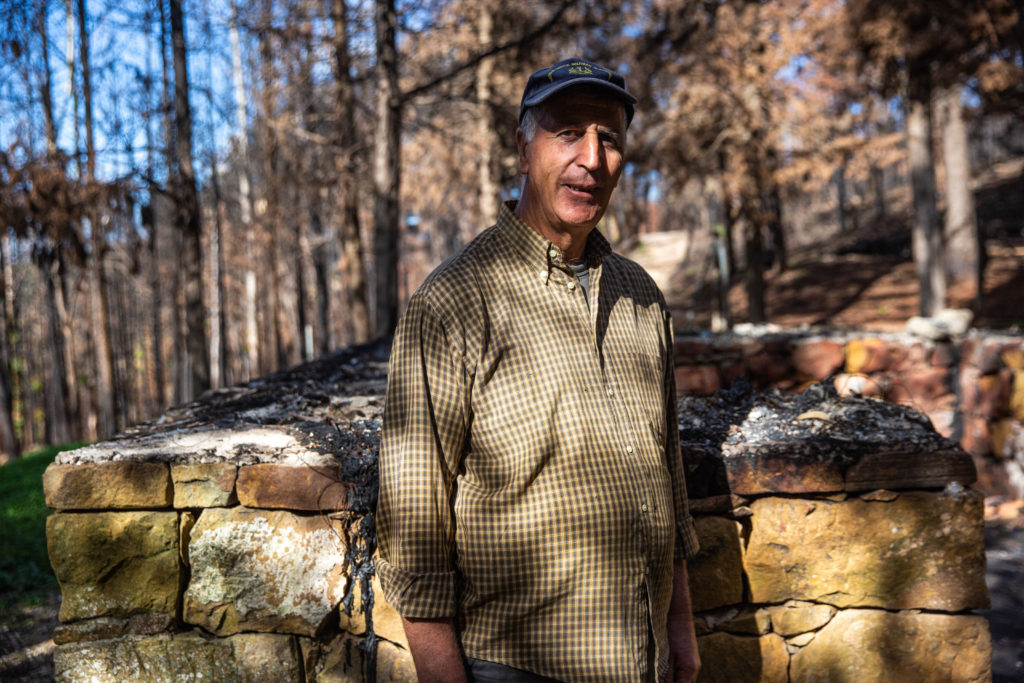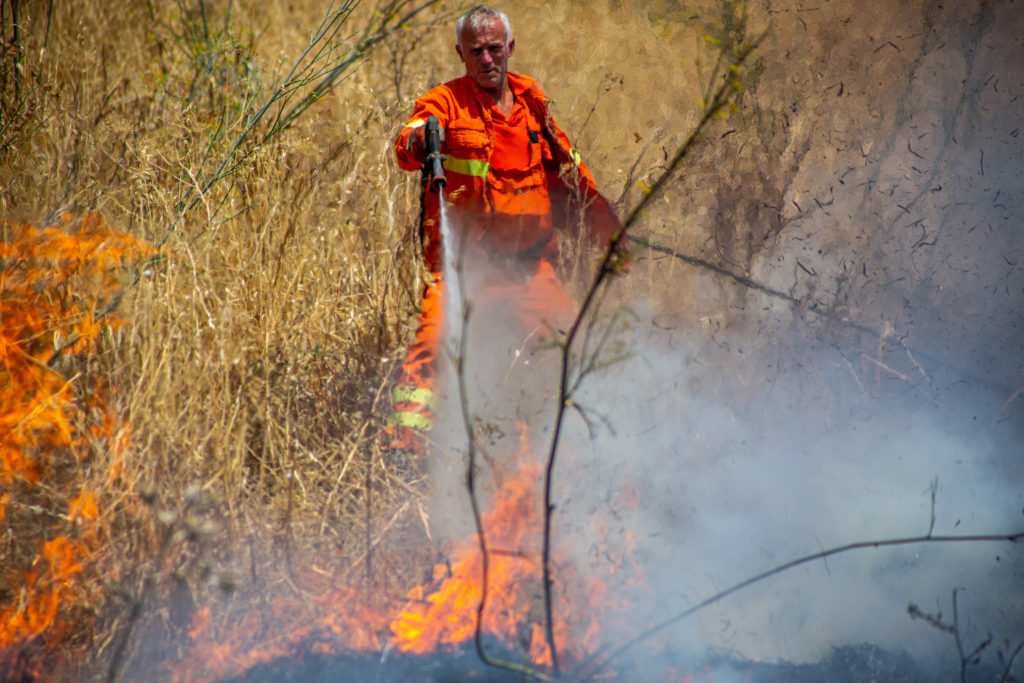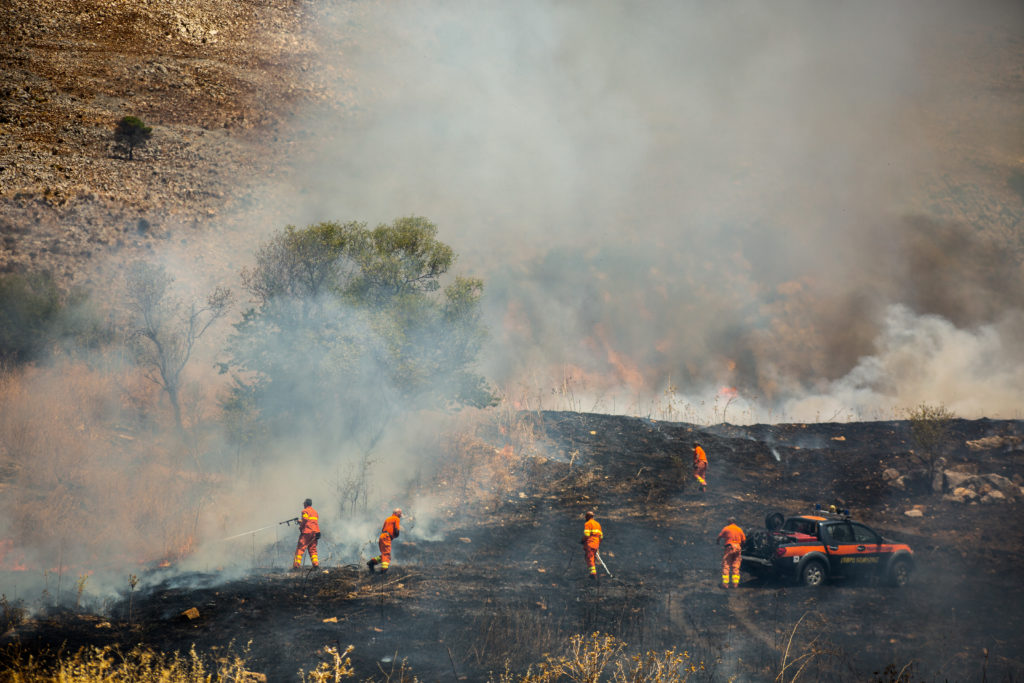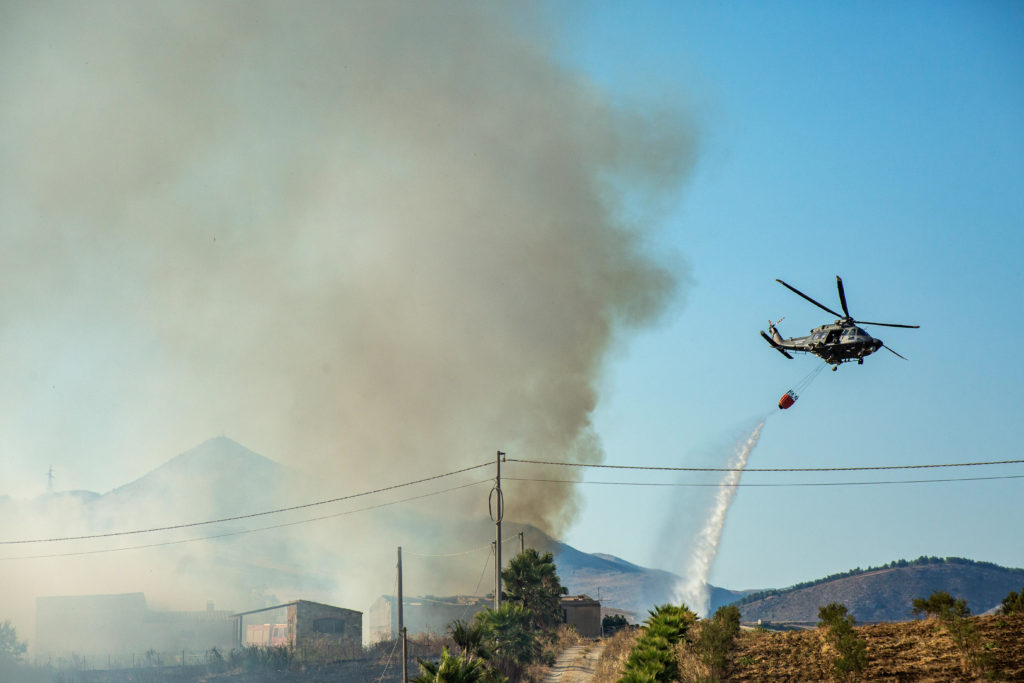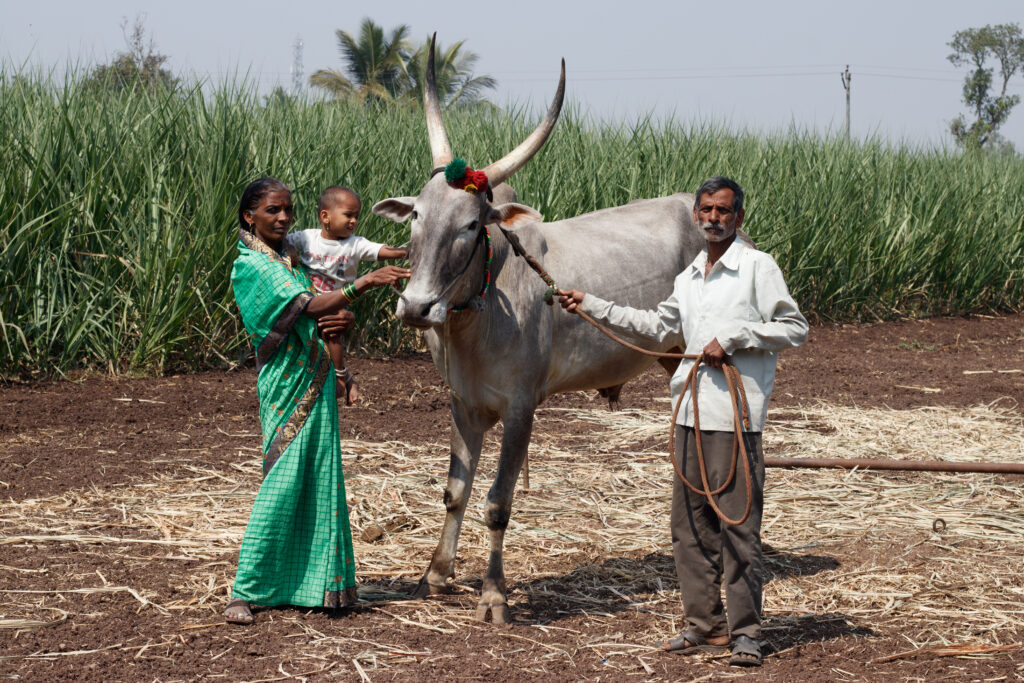
For the first time in Khandya’s life as a working ox, five veterinary doctors visited him more than 30 times in one week at Pandurang Khondre’s cattle shed.
It all started in mid-2022 when Khondre saw traces of an infection on the right leg of Khandya, his strongest ox. “Khandya” is derived from the name of a local deity named “Khandoba.”
“The ox had worked without any trouble for the entire day,” the farmer recounted. “However, I saw a few red-colored nodes when I returned the next morning.” Khondre immediately called a private vet. When the doctor showed up an hour later at Khondre’s cattle shed in the Jambhali village of western India’s Maharashtra state, he suspected Khandya must have been infected with Lumpy skin disease. That began the first of eight weeks of veterinary visits for Khandya and other cattle on the farm.
Lumpy, or LSD, is a contagious viral disease that affects cattle. Certain species of blood-feeding insects, like flies, ticks and mosquitoes, transmit it. Symptoms include skin nodules, severe loss of appetite, fever, nasal discharge, watery eyes, drop in milk production, and swelling of limbs and genitalia.
In 2022, Lumpy became an epidemic in India, affecting 2.9 million cattle (1.51 percent) across 23 states. From 2022 until the first week of this month, India reported 184,447 cattle deaths. No reports in the public domain have yet to sum up economic losses for the whole country. However, the United Nations’ Food and Agriculture Organization’s 2020 risk assessment report mentions Lumpy caused $1.45 billion in direct losses of livestock and production in south, east and southeast Asia. The report added, “These losses may be higher, due to the severe trade implications for infected countries.”
As of this month, 84.19 million Indian cattle have been vaccinated against Lumpy. If going by the latest livestock census released in 2019, that would mean 43 percent of cattle.
With the lives of India’s poor having been complicated by climate change impacts and livestock diseases, many have been forced to flee their homes in search of another source of income and take on loans for living expenses, as this reporter documented in a previous article for Toward Freedom.
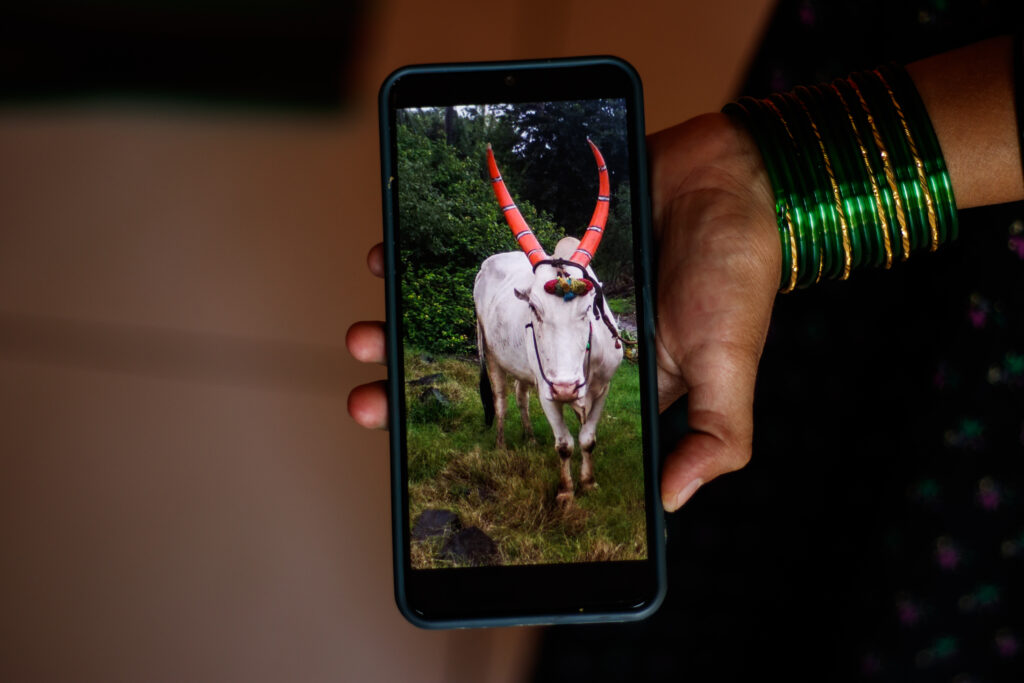
A Tearful Ox
Lumpy’s impact is so severe that Khandya went from eating 50 kilograms of cattle feed daily to finding it difficult to swallow five kilograms. Khondre, who is in his early 50s, and his wife, Malan, in her late 40s, spent over 16 hours a day looking after the ox as he struggled with the disease.
“He wouldn’t eat anything. When asked what happened, he always responded with tears,” says Khondre.
Khandya is among the 34,711 cattle in Maharashtra who have succumbed to Lumpy, for which goat pox vaccine is being administered. While India has developed an indigenous vaccine, it has yet to be made available for commercial production.
Then, in the final 72 hours of Khandya’s life in October, the situation took a bad turn.
“He had become so stiff that whenever we touched him, it felt like we were touching wood,” Malan said. “The nodes often returned despite the regular treatment.”
The Khondres spent over 60,000 Indian Rupees ($724) over three months on the treatment.
“The Government doctors wouldn’t show up. There were times we waited for an entire day,” Khondre said.
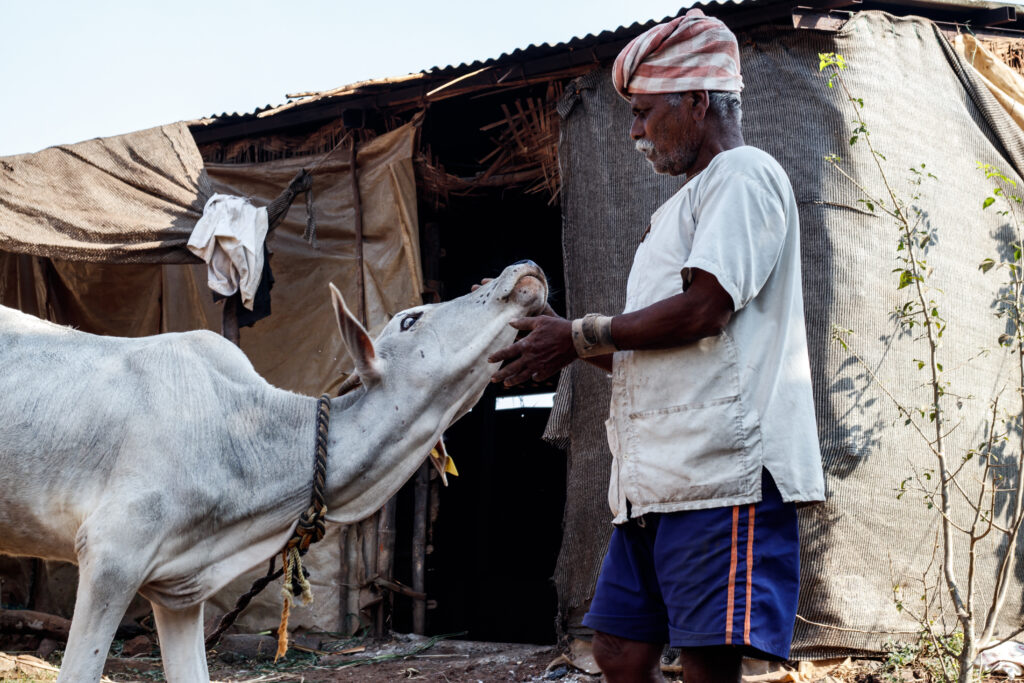
A Dearth of Vets In a Country of Cattle
Public vet and livestock supervisor Raosaheb Salunkhe, working in the Danoli village of Maharashtra’s Kolhapur district, has helped save several cattle.
“During the peak of the outbreak, we were attending to as many as 80 cases daily,” Salunkhe said. “Many farmers spent a lot of money on private vets and consulted us much later, when the disease became severe.”
For the 302.79 million bovine population (as per the 2019 livestock census), India has 73,129 registered public veterinary practitioners and just 54 recognized veterinary colleges. That means 1 vet is available to care for every 4,140 cattle.
Of Khondre’s five cattle, another affected ox survived the disease. However, Khondre said the ox wasn’t the same after recovering. “After an hour’s work, he felt dizzy and kept losing balance.” Eventually, he sold the ox and bought a new one by paying another $181.
Khondre is now worried about his last stable income source drying up.
“Whenever the oxen worked in the fields, I got 800-1000 rupees ($10-12) daily. Now, with just one ox, I have to rent another, and even earning 400 rupees ($4.8) daily has become difficult.”
Buying another ox will cost him $1,000, which remains out of bounds with Khondre having taken a hit over recent years. Climate change events, such as incessant rainfall, heat waves and repeat flooding, have caused financial losses.
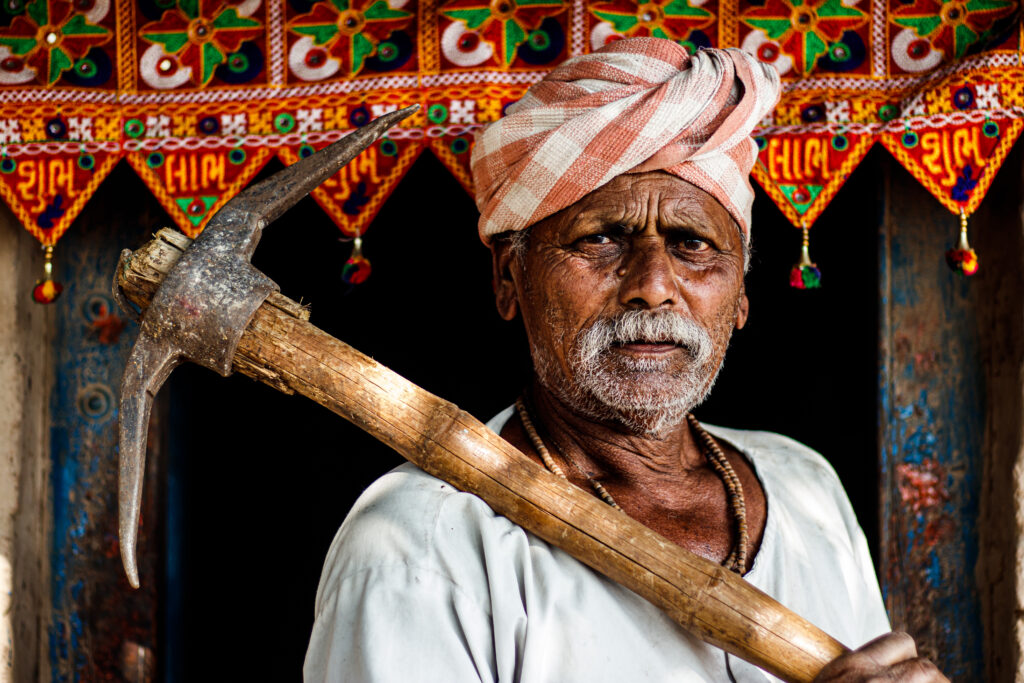
‘Everything Was Gone In a Few Hours’
About 30 kilometers from Jambhali village, Vitthal Kumbhar and his family recounted their own trouble with Lumpy. Of their five cattle, a 10-year-old indigenous cow and a bull calf were infected in November in their village of Bhendavade.
“Within a day, the swelling spread to all the legs,” 70-year-old Kumbhar described, “and at the same time, she was diagnosed with pneumonia.”
It took over two months for both animals to recover.
Jitendra Kurundwade, assistant commissioner of Kolhapur’s Animal Husbandry Department, explained how the district handled the contagious disease.
“There were cases where we were treating the same cattle for almost a month.”
Given the rapid movement of the virus, almost 31,000 cattle in 54 villages of Shirol block were at risk of being infected. (In India, several villages form a block. Jambhali village is part of Shirol block.)
“So, we decentralized the vaccination process,” Kurundwade said, “and vaccinated all of them in a week, which otherwise would have taken at least six months.”
Their efforts were successful, as Kurundwade shared that around 4,500 cows (14 percent) were infected and 150 succumbed. The death rate came to 0.48 percent of all cows and 3.33 percent of infected cows.
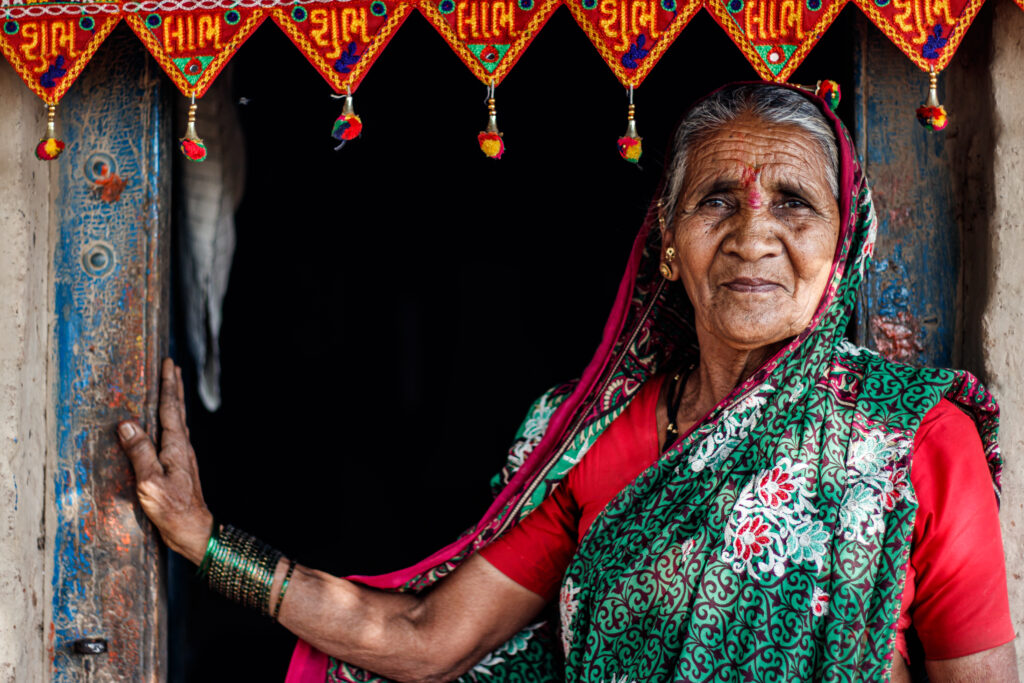
A Virus and Climate Change Wreak Havoc
When the cow first showed Lumpy symptoms, Kumbhar called a private doctor from a nearby village. The vet visited once and suggested seeking treatment from the public hospital, as private hospital care is pricey. Kumbhar’s son, Ganesh, 32, transported each of the four public doctors on his bike from the veterinary hospitals on a daily basis. Collectively, they provided more than 90 injections in a month.
Before Lumpy, the cow produced daily at least six liters of milk, which they served to the bull calf. Now, they are forced to buy milk from the market or use milk from other cattle, which eats up a source of their income.
Farmers reported affected cattle took at least four months to recover. A decline in milk production and in cattle strength affected farm operations.
However, India remains the highest milk producer, contributing 23 percent to global milk production. The country produced 210 million tons of milk in 2020-21.
The dairy sector employs 80 million rural households in India, with the majority being marginal landowning farmers and the landless. For millions of farmers, dairy remains the only source of income, as climate change continues to destroy crops. For instance, in just October, Kumbhar’s 1.5-acre field was among the 2.8 million hectares (6.91 million acres) destroyed during heavy rains in Maharashtra.
In 2021, floods devastated crops on 7.79 million hectares (19.24 acres) of farmland in India, affecting 38.56 million people and killing 64,880 cattle. Further, from January 1 to September 30, 2022, climate disasters continued to wreak havoc in India, with extreme weather events on 241 out of 273 days.
Kumbhar survived the 2019 and 2021 floods, 2022 heat waves, and erratic rainfall only because of cattle milk. However, his cow barely produces milk after Lumpy, and debt is mounting fast.
His wife, Sarasvati, in her mid-60s, put things in perspective by recalling the recent disasters in their village, Bhendavade, in Maharashtra’s Kolhapur district. In October, hailstorms devastated the sugarcane she cultivated on 1.5 acres.
“Everything was gone in a few hours.”
Of the 100 tons she was expecting to cut that would have been worth $3,625, she only harvested 32 tons. “I wasn’t even able to recover the cost of production.” But that wasn’t the first time. In 2019, her family harvested just 30 tons of sugarcane. Then, in 2021, severe floods left them with 10 tons to cut. “Never in my life have I reported such low production,” Kumbhar said. “Despite using chemical fertilizers and pesticides, the production isn’t increasing.”
Similarly, Khondre, too, recently harvested 21 tons of sugarcane on three-fourths of an acre, compared to at least 45 tons.
“It takes about 15 months for the sugarcane to grow completely. The only thing we got from this was more debt.”
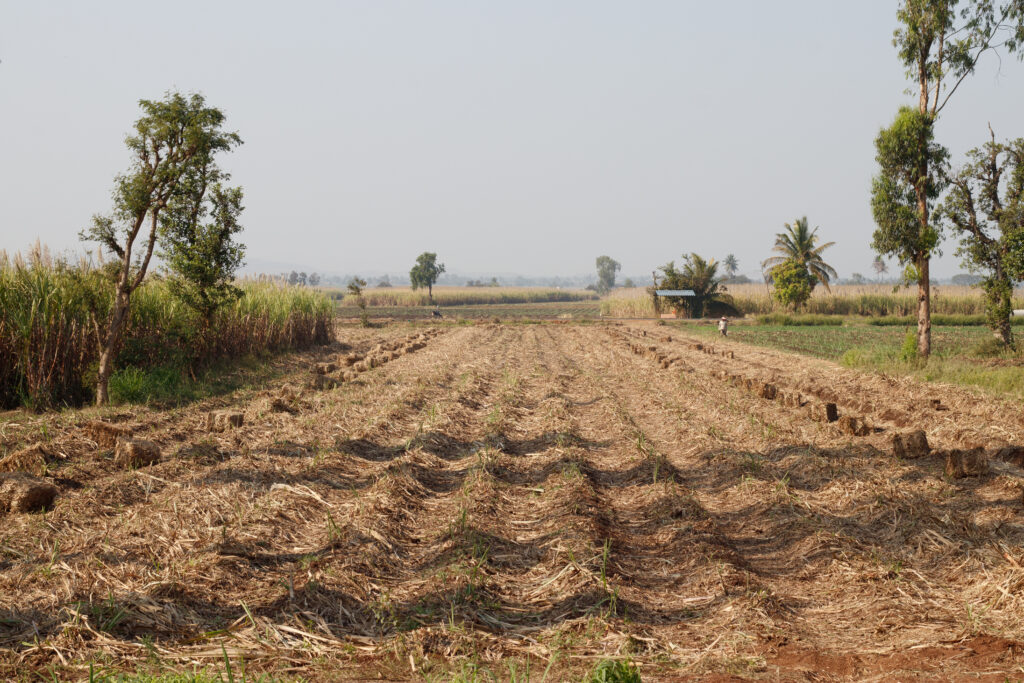
Mounting Debt and Losing a ‘Family Member’
Recurring climate disasters have led to mounting debts, forcing Indian farmers to cut back on fodder (animal feed). A 40-kilogram sack of maize cattle feed costs at least $17 and lasts less than a week. “If we can’t sell the cattle milk and face repeated losses in the field, how will we buy this fodder?” Kumbhar asked. Nowadays, most of the time, he skips fodder, which affects milk production.
Last year, they took out a crop loan of $1,208 and will have to take on another loan this year. With 30 tons of sugarcane, he just managed to get $1,087. In normal climatic conditions, it would have fetched him at least $3,624. “In 15 months, I couldn’t earn a single rupee. Rather, I am making a loss,” Kumbhar said.
“Just an agriculture loan is not enough now. We’ll also have to take loans from friends and private moneylenders,” said his daughter-in-law, Poonam, 28. Her husband, Ganesh, could not go to work for two months as an operator at a grinding machine in a nearby factory.
“I spent most of the time with the cattle,” he said.
Similarly, last year, Rohit Koli, Khondre’s neighbor down the road, spent over two months with his infected Holstein Friesian cow. “I couldn’t sleep properly for over 45 days. The vets treated her every day for 25 days. But, still, we lost an important family member,” the Jambhali resident said.
“For the final six days, she ate nothing, after which she passed away,” he recounted. “It will cost at least 110,000 Rupees ($1,329) to buy another Holstein cow, which we can’t afford.”
Koli recalled the cow produced at least 24 liters of milk daily, fetching him over $8. Four of the seven cows he owns were infected, of which three recovered and one died.
“Lumpy is like a corona of animals,” Koli said, referring to the novel coronavirus of 2019 that mainly affected humans. “I’ve never seen so many cattle falling sick and dying.”
Meanwhile, every morning, Khondre, starts his day by looking for Khandya. “He was our family member,” he said, teary-eyed. When the ox died, more than 100 farmers gathered to mourn. “Everyone loved Khandya,” said Khondre, looking at the ox’s photo once again on his daughter-in-law’s smartphone.
“Majha bail (My ox).”
Sanket Jain is an independent journalist based in the Kolhapur district of the western Indian state of Maharashtra. He was a 2019 People’s Archive of Rural India fellow, for which he documented vanishing art forms in the Indian countryside. He has written for Baffler, Progressive Magazine, Counterpunch, Byline Times, The National, Popula, Media Co-op, Indian Express and several other publications.

